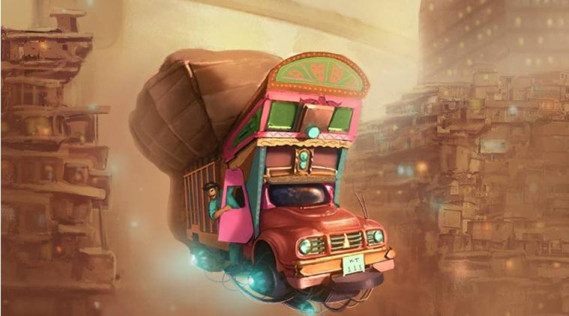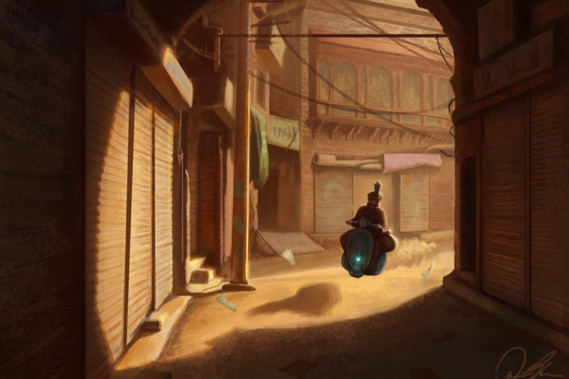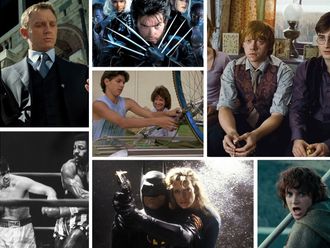
We all love to imagine what it’s going to be like living in the future and sci-fi films give shape to such imaginations.
But what exactly might change and what would remain intact? The changing landscapes of urban spaces with tall skyscrapers have already made living ‘closer to the sky’ possible but does it mean our connection with earthly roots will disappear? Will technology curtail the little joys of everyday life? From our cherished tea drinking sessions at roadside tea shops to milkmen delivering door-to-door... will all these just be a thing of the past?
Well, for 30-year-old Pakistani illustrator and designer Omar Gilani, no matter how advanced we get, there will be a few intangible elements alive despite development. Gilani’s vibrant artworks have taken Pakistan by storm, and now, even the world has been mesmerised by its futurist imagination. And with a similar desi-element, Indians have found a common ground to appreciate his work. We got in touch with the Lahore-based self-taught artist to explore more of his world.
Gilani says that he always enjoyed drawing but never thought he could turn his passion into his profession.
“It was at hobby status for the longest time. In Peshawar, where I grew up, art wasn’t considered a profession, and so I pursued studies in engineering,” he said.
The artist who has a Master of Science in Mechanical Engineering, and an Master of Philosophy in Robotics realised very recently that art could be made into a viable career. He began learning more about digital art through books and online tutorials and initially approached the work part-time, managing between his passion and his job about four years ago.
To start off his artistic career he worked on all sorts of commercial designing projects — from manual design and magazine covers to website backgrounds and posters. He has even worked for the United Nations, Save the Children initiative and the British Council in the country.
“With the UN I designed a couple of books and safety manuals for schools, and for Save the Children I created art for a child empowerment campaign,” Gilani said. Currently, he is working in the mobile game industry, and for Patari.pk, a leading music startup.
Talking about the recent sci-fi artwork that has awed everyone, the designer said it was not planned.
“This project is pretty recent; I made a few pieces sporadically over the past year when I got back home from work, just for fun. It was around November 2016 when I quit my day job that I gave this more focused attention,” he said.
Most of the paintings in his sci-fi project are an amalgamation of earthy essence and ultramodern advancement.
“As for inspirations, I think it’s the perfect marriage of my love for sci-fi with the culture that I’m most familiar with. In that sense I never had to force myself to paint or scramble to find inspiration; each painting has been pure joy,” Gilani said.
Delving into why he decided to give a futuristic twist to everyday scenes, Gilani noted: “I think there are segments of society in Pakistan, and perhaps India as well, that still live in the past, no matter how much the technology around them may progress. I expect that to continue in the future. Of course, there will be super-futuristic urban centres that will look like any other super futuristic urban centres around the world, but my interest was in capturing the essence of more rustic Pakistani culture, and how tech advancements would affect that.”
The digital paintings include imageries of powerful women, often with loaded guns, a little startling to an otherwise conservative image of the country’s women.
Noting that it’s “partially correct” that there is a lack of freedom for women in Pakistan, he said: “Women do enjoy great freedom in the urban centres.”
And through his work, he tried to capture both urban and rural dimensions.
“Pakistan is a mixed bag in that regard, and I’ve kept it mixed to reflect that. You’ll see a woman in a burqa in my work, but you’ll also see a road warrior lady toting an assault rifle,” he added.
But along with such powerful portrayal of women and development poverty too has secured a berth in his creation. Even in the ambitious project, there are images of ‘cyborg-beggar’ — a child begging outside the window of a car.











